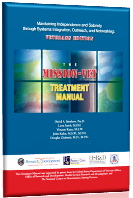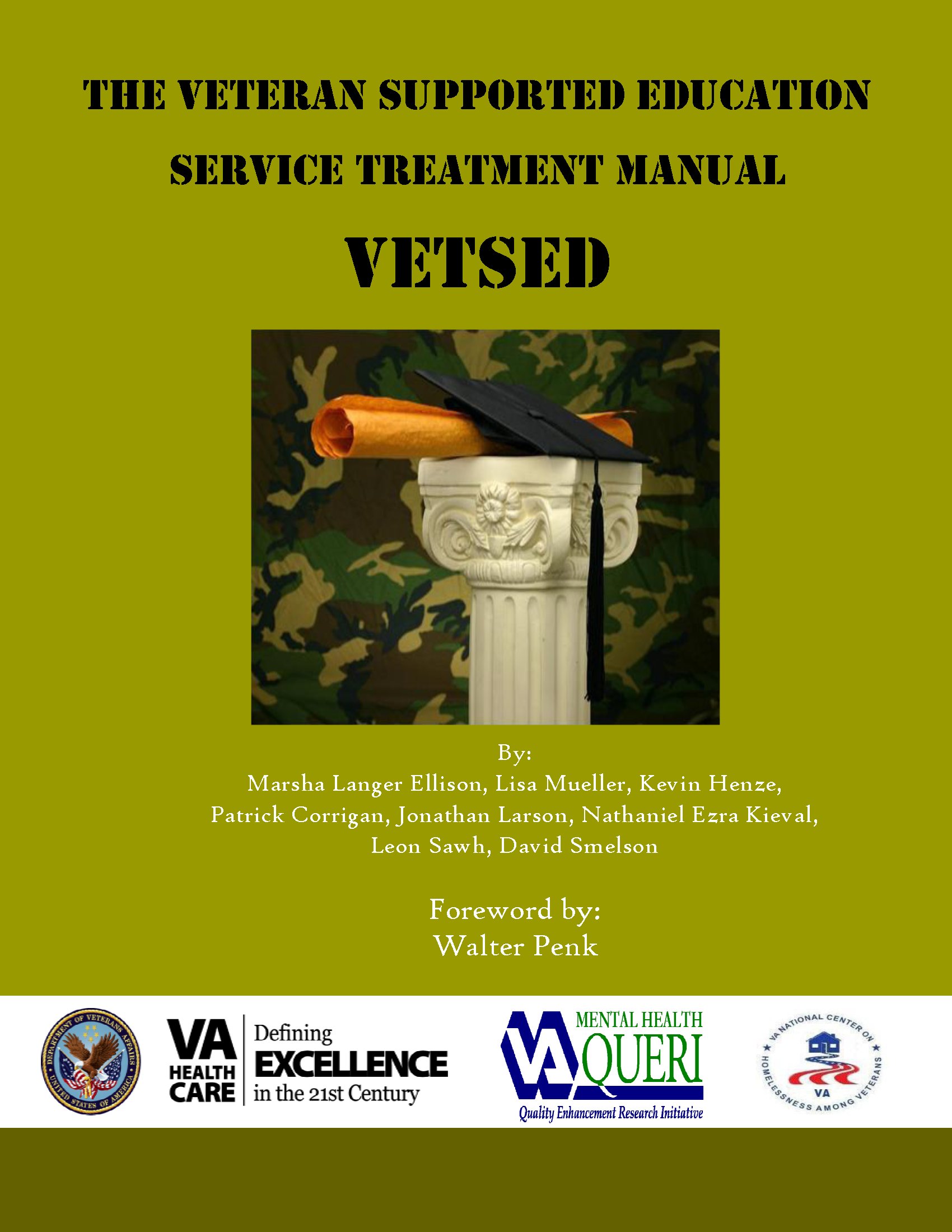Products
|
Original MISSION Manual The original Maintaining Independence and Sobriety through Systems Integration, Outreach, and Networking (MISSION) manual serves as a guide for Case Managers, Peer Support Specialists, and Clinical Supervisors in implementing the MISSION integrated treatment approach. MISSION provides case management, psychoeducational treatment, and vocational support to homeless and formerly homeless individuals with co-occurring psychiatric and substance use disorders (COD) as they work to achieve recovery from homelessness, substance abuse, mental illness and unemployment while transitioning to independent living in the community. |
|
|
Original MISSION Consumer Workbook A supplemental workbook to engage clients who have struggled with homelessness by providing MISSION program participants with exercises and resources to aid in their recovery from a co-occurring disorder. Peer Support Specialists and Case Managers should work with the client to complete the items in the workbook that correspond with specific Dual-Recovery Therapy sessions and use the workbook as a talking point in helping clients in the various stages of their recovery. |
|
|
MISSION VET Manual The MISSION-VET manual is an extension of the original MISSION manual and serves as a guide for Case Managers, Peer Support Specialists and Clinical Supervisors in implementing an integrated treatment approach for Veterans who are homelessness, at-risk for homelessness or who are formerly homeless. As with the original manual, MISSION-VET provides case management, psychoeducational treatment, and vocational support to homeless and formerly homeless individuals with co-occurring psychiatric and substance use disorders (COD) as they work to achieve recovery from homelessness, substance abuse, mental illness and unemployment while transitioning to independent living in the community. In addition to the components of the original manual, MISSION-VET offers information about homelessness among Veterans an enhanced section on Vocational and Educational Support and a new section on incorporating Trauma-Informed Care considerations. |
|
|
MISSION VET Consumer Workbook A supplemental workbook to engage homeless Veterans by providing exercises and resources to aid in their recovery from a co-occurring disorder and homelessness. Peer Support Specialists and Case Managers should work with the Veteran to complete the items in the workbook that correspond with specific Dual-Recovery Therapy sessions and use the workbook as a talking point in helping clients with co-occurring mental illness and substance abuse, homelessness and related issues that arise in the various stages of their recovery. |
|
|
HUD-VASH Resource Guide for Permanent Housing and Clinical Care The HUD-VASH Resource Guide for Permanent Housing and Clinical Care was designed to provide case managers and others who work with homeless Veterans in the HUD-VASH program, with a comprehensive set of resources to assist in addressing the multifaceted needs of homeless Veterans. The Resource Guide is a product of the National Center on Homelessness Among Veterans and was developed by a dynamic team of researchers, policy analysts, public health experts, psychologists, physicians and social workers located throughout the country. |
|
|
The Veteran Supported Education Treatment Manual (VetSEd) is a recovery oriented, peer-delivered service for Veterans. It was developed to respond to the educational goals and needs of Post 9/11 service members who wish to advance their education, but who are also experiencing mental health, substance abuse and trauma-related disorders that challenge educational goal attainment. VetSEd is a comprehensive treatment approach using the Choose, Get, Keep model of psychiatric rehabilitation. The manual provides a framework for promoting the ability of our returning service men and women to successfully begin or continue their post-secondary education, often by utilizing the Post 9/11 GI Bill. There are three parts that include: Part One: a Summative overview for administrators and program designers interested in the VetSEd approach. Part Two: a Treatment manual for peer VetSEd providers and clinical supervisors which includes Worksheets to be used by the peer VetSEd provider in delivery of the VetSEd approach. Part Three: an Implementation Toolkit that contains background information and other guidance for program staffing, participant recruitment and clinical supervision. |








